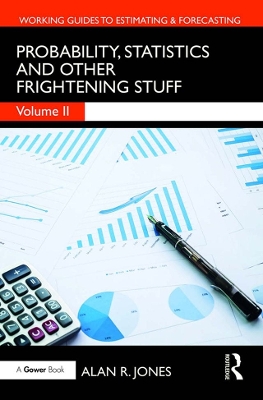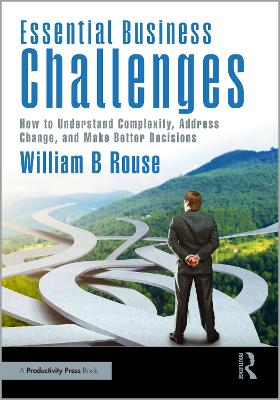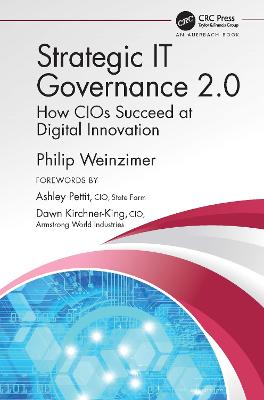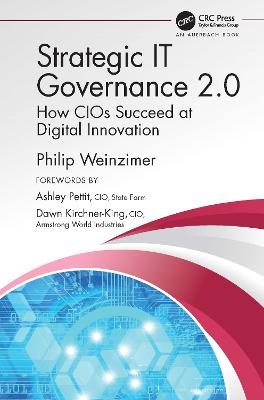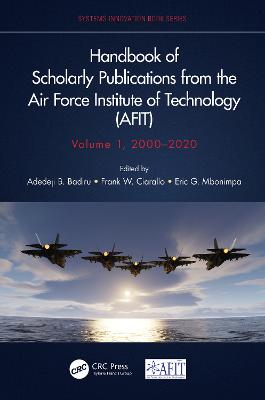Learning, Unlearning and Re-Learning Curves
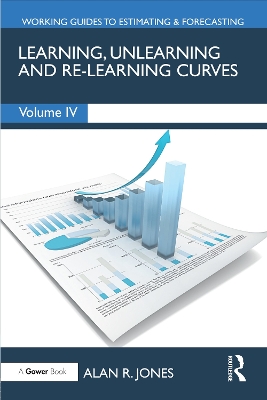 portes grátis
portes grátis
Learning, Unlearning and Re-Learning Curves
Jones, Alan
Taylor & Francis Ltd
01/2025
304
Mole
9781032948508
Pré-lançamento - envio 15 a 20 dias após a sua edição
Descrição não disponível.
Volume IV Table of Contents, 1 Introduction and Objectives, 1.1 Why write this book? Who might find it useful? Why Five Volumes?, 1.1.1 Why write this series? Who might find it useful?, 1.1.2 Why Five Volumes?, 1.2 Features you'll find in this book and others in this series, 1.2.1 Chapter Context, 1.2.2 The Lighter Side (humour), 1.2.3 Quotations, 1.2.4 Definitions, 1.2.5 Discussions and Explanations with a Mathematical Slant for Formula-philes, 1.2.6 Discussions and Explanations without a Mathematical Slant for Formula-phobes, 1.2.7 Caveat Augur, 1.2.8 Worked Examples, 1.2.9 Useful Microsoft Excel Functions and Facilities, 1.2.10 References to Authoritative Sources, 1.2.11 Chapter Reviews, 1.3 Overview of Chapters in this Volume, 1.4 Elsewhere in the 'Working Guide to Estimating & Forecasting' Series, 1.4.1 Volume I: Principles, Process and Practice of Professional Number Juggling, 1.4.2 Volume II: Probability, Statistics and other Frightening Stuff, 1.4.3 Volume III: Best Fit Lines & Curves, and some Mathe-Magical Transformations, 1.4.4 Volume IV: Learning, Unlearning and Re-Learning Curves, 1.4.5 Volume V: Risk, Opportunity, Uncertainty and Other Random Models, 1.5 Final Thoughts and Musings on this Volume and Series, References, , 2 Quantity-based Learning Curves, 2.1 A Brief History of the Learning Curve as a Formal Relationship, 2.2 Two Basic Learning Curve Models (Wright and Crawford), 2.2.1 Wright Cumulative Average Learning Curve, 2.2.2 Crawford Unit Learning Curve, 2.2.3 Wright and Crawford Learning Curves Compared, 2.2.4 What's So Special about the Doubling Rule?, 2.2.5 Learning Curve Regression - What appears to be Wright, may in fact be Wrong!, 2.3 Variations on the Basic Learning Curve Models, 2.3.1 DeJong Unit Learning Curve, 2.3.2 DeJong-Wright Cumulative Average Hybrid Learning Curve, 2.3.3 Stanford-B Unit Learning Curve, 2.3.4 Stanford-Wright Cumulative Average Hybrid Learning Curve, 2.3.5 S-Curve Unit Learning Curve, 2.3.6 S-Curve-Wright Cumulative Average Hybrid Learning Curve, 2.4 Where and When to Apply Learning and How Much?, 2.4.1 To What Kind of Task can a Learning Curve be applied?, 2.4.2 Additive and Non-Additive Properties of Learning Curves, 2.4.3 Calibrating or Measuring Observed Learning, 2.4.4 What if we don't have any actuals? Rules of Thumb Rates of Learning, 2.5 Changing the Rate of Learning - Breakpoints, 2.5.1 Dealing with a Breakpoint in a Unit Learning Curve Calculation, 2.5.2 Dealing with a Breakpoint in a Cumulative Average Learning Curve Calculation, 2.6 Learning Curves: Stepping Up and Stepping Down, 2.6.1 Step-points in a Unit Learning Curve Calculation, 2.6.2 Step-points in a Cumulative Average Learning Curve Calculation, 2.7 Cumulative Values of Crawford Unit Learning Curves, 2.7.1 Conway-Schultz Cumulative Approximation, 2.7.2 Jones Cumulative Approximation, 2.7.3 Cumulative Approximation Formulae Compared, 2.7.4 Batch or Lot Averages, 2.7.5 Profiling Recurring Hours or Costs - the Quick Way, 2.8 Chapter Review, References, , 3 Unit Learning Curve - Cost Driver Segmentation, 3.1 Learning Curve Cost Driver Studies - What Others Have Said, 3.1.1 Loud and Clear, 3.1.2 Jefferson's Pie, 3.2 Cost Driver Changes and Breakpoints, 3.2.1 Output Rate: Driver or Consequence of Learning?, 3.2.2 End-of-Line Effects on Learning, 3.3 Segmentation Approach to Unit Learning, 3.3.1 Stopping and Starting from Where We Left Off, 3.3.2 What If We Invest More or Less Up-front?, 3.3.3 Rate Affected Learning Revisited, 3.3.4 Parallel v Serial Working, 3.3.5 Calibrating the Cost Driver Segment Contributions, 3.4 Chapter Review, References, , 4 Unlearning and Re-Learning Techniques, 4.1 Reasons to Forget, 4.2 Anderlohr's Technique, 4.3 An Alternative Simplified Retrograde Technique (Not Recommended), 4.4 Segmentation Technique, 4.5 Comparison of Re-Learning Techniques, 4.6 Calibrating the Level of Learning Lost, 4.6.1 Calibrating the Level of Learning Lost Using the Segmentation Technique, 4.6.2 Calibrating the Level of Learning Lost Using the Anderlohr Technique, 4.7 Chapter Review, References, , 5 Equivalent Unit Learning, 5.1 The Problems with Traditional Unit Learning Curves, 5.2 Development of the Equivalent Unit Learning Theory, 5.2.1 EUL Confidence and Prediction Intervals, 5.3 Equivalent Unit Learning and Breakpoints, 5.4 Double-Bunking Data for Early Debunking of Breakpoints, 5.5 Equivalent Unit Learning and Achievement Mortgaging (Progress Optimism Bias), 5.6 Using Equivalent Unit Learning as a Top-down Validation, 5.7 Benefits of Using Equivalent Unit Learning, 5.8 Chapter Review, References, , 6 Multi-Variant Learning, 6.1 Multi-Variant Learning Curves, 6.1.1 Option 1: Ignore Differences (ID), 6.1.2 Option 2: Fixed Factors (FF), 6.1.3 Option 3: Total Separation (TS), 6.1.4 Option 4: Proportional Representation (PR), 6.2 Multi-Variant Learning Curve Model Calibration, 6.2.1 Calibration with the ID Approach, 6.2.2 Calibration with the FF Approach, 6.2.3 Calibration with the TS Approach, 6.2.4 Calibration with the PR Approach, 6.2.5 Comparison of Results, 6.3 Cross-Product Organisational Learning Curve Models, 6.4 Chapter Review, References, 7 Time-Based Learning Curves, 7.1 Time-Performance Learning Curve, 7.2 Bevis-Towill Time-Constant Model, 7.3 Cross-Product Organisational Learning Curve Models Revisited, 7.4 Chapter Review, References, 8 The Cost Impact of Collaborative Working, 8.1 Collaborative Development Costs with Equal Workshare Partners, 8.2 The Collaborative Development with Unequal Workshare Partners, 8.3 Production Cost Implications of Collaborative Working, 8.4 Chapter Review, References, Glossary of Estimating Terms
Este título pertence ao(s) assunto(s) indicados(s). Para ver outros títulos clique no assunto desejado.
Learning Curve Model;Learning Curve;Microsoft Excel Solver;Experience Curve;Learning Curve Exponent;Cost Improvement Curve;Potential Cost Drivers;Cost Reduction Curve;Learning Curve Rate;Progress Function;Traditional Learning Curve;Lost Learning;Cumulative Average Curve;Rate Affected Learning;Design Engineering Support;End-of-Line Effects;Final Production Quantity;Unit Learning;Build Number;Cumulative Average Learning;Cumulative Average;Time-Constant Learning;Time Period Scale;Time-Performance Learning;Relation Ships;Collaborative Working;Constant Output Rate;Alan R. Jones;Cycle Time;estimating;Cost Drivers;forecasting;Prediction Intervals;unlearning;Segmentation Approach;re-learning;Generalised Power Function;working guide to estimating and forecasting;Learning Exponents;Log Log Space;Empirical Relationship;Square Root Rule;Equivalent Unit;Time Constant Model
Volume IV Table of Contents, 1 Introduction and Objectives, 1.1 Why write this book? Who might find it useful? Why Five Volumes?, 1.1.1 Why write this series? Who might find it useful?, 1.1.2 Why Five Volumes?, 1.2 Features you'll find in this book and others in this series, 1.2.1 Chapter Context, 1.2.2 The Lighter Side (humour), 1.2.3 Quotations, 1.2.4 Definitions, 1.2.5 Discussions and Explanations with a Mathematical Slant for Formula-philes, 1.2.6 Discussions and Explanations without a Mathematical Slant for Formula-phobes, 1.2.7 Caveat Augur, 1.2.8 Worked Examples, 1.2.9 Useful Microsoft Excel Functions and Facilities, 1.2.10 References to Authoritative Sources, 1.2.11 Chapter Reviews, 1.3 Overview of Chapters in this Volume, 1.4 Elsewhere in the 'Working Guide to Estimating & Forecasting' Series, 1.4.1 Volume I: Principles, Process and Practice of Professional Number Juggling, 1.4.2 Volume II: Probability, Statistics and other Frightening Stuff, 1.4.3 Volume III: Best Fit Lines & Curves, and some Mathe-Magical Transformations, 1.4.4 Volume IV: Learning, Unlearning and Re-Learning Curves, 1.4.5 Volume V: Risk, Opportunity, Uncertainty and Other Random Models, 1.5 Final Thoughts and Musings on this Volume and Series, References, , 2 Quantity-based Learning Curves, 2.1 A Brief History of the Learning Curve as a Formal Relationship, 2.2 Two Basic Learning Curve Models (Wright and Crawford), 2.2.1 Wright Cumulative Average Learning Curve, 2.2.2 Crawford Unit Learning Curve, 2.2.3 Wright and Crawford Learning Curves Compared, 2.2.4 What's So Special about the Doubling Rule?, 2.2.5 Learning Curve Regression - What appears to be Wright, may in fact be Wrong!, 2.3 Variations on the Basic Learning Curve Models, 2.3.1 DeJong Unit Learning Curve, 2.3.2 DeJong-Wright Cumulative Average Hybrid Learning Curve, 2.3.3 Stanford-B Unit Learning Curve, 2.3.4 Stanford-Wright Cumulative Average Hybrid Learning Curve, 2.3.5 S-Curve Unit Learning Curve, 2.3.6 S-Curve-Wright Cumulative Average Hybrid Learning Curve, 2.4 Where and When to Apply Learning and How Much?, 2.4.1 To What Kind of Task can a Learning Curve be applied?, 2.4.2 Additive and Non-Additive Properties of Learning Curves, 2.4.3 Calibrating or Measuring Observed Learning, 2.4.4 What if we don't have any actuals? Rules of Thumb Rates of Learning, 2.5 Changing the Rate of Learning - Breakpoints, 2.5.1 Dealing with a Breakpoint in a Unit Learning Curve Calculation, 2.5.2 Dealing with a Breakpoint in a Cumulative Average Learning Curve Calculation, 2.6 Learning Curves: Stepping Up and Stepping Down, 2.6.1 Step-points in a Unit Learning Curve Calculation, 2.6.2 Step-points in a Cumulative Average Learning Curve Calculation, 2.7 Cumulative Values of Crawford Unit Learning Curves, 2.7.1 Conway-Schultz Cumulative Approximation, 2.7.2 Jones Cumulative Approximation, 2.7.3 Cumulative Approximation Formulae Compared, 2.7.4 Batch or Lot Averages, 2.7.5 Profiling Recurring Hours or Costs - the Quick Way, 2.8 Chapter Review, References, , 3 Unit Learning Curve - Cost Driver Segmentation, 3.1 Learning Curve Cost Driver Studies - What Others Have Said, 3.1.1 Loud and Clear, 3.1.2 Jefferson's Pie, 3.2 Cost Driver Changes and Breakpoints, 3.2.1 Output Rate: Driver or Consequence of Learning?, 3.2.2 End-of-Line Effects on Learning, 3.3 Segmentation Approach to Unit Learning, 3.3.1 Stopping and Starting from Where We Left Off, 3.3.2 What If We Invest More or Less Up-front?, 3.3.3 Rate Affected Learning Revisited, 3.3.4 Parallel v Serial Working, 3.3.5 Calibrating the Cost Driver Segment Contributions, 3.4 Chapter Review, References, , 4 Unlearning and Re-Learning Techniques, 4.1 Reasons to Forget, 4.2 Anderlohr's Technique, 4.3 An Alternative Simplified Retrograde Technique (Not Recommended), 4.4 Segmentation Technique, 4.5 Comparison of Re-Learning Techniques, 4.6 Calibrating the Level of Learning Lost, 4.6.1 Calibrating the Level of Learning Lost Using the Segmentation Technique, 4.6.2 Calibrating the Level of Learning Lost Using the Anderlohr Technique, 4.7 Chapter Review, References, , 5 Equivalent Unit Learning, 5.1 The Problems with Traditional Unit Learning Curves, 5.2 Development of the Equivalent Unit Learning Theory, 5.2.1 EUL Confidence and Prediction Intervals, 5.3 Equivalent Unit Learning and Breakpoints, 5.4 Double-Bunking Data for Early Debunking of Breakpoints, 5.5 Equivalent Unit Learning and Achievement Mortgaging (Progress Optimism Bias), 5.6 Using Equivalent Unit Learning as a Top-down Validation, 5.7 Benefits of Using Equivalent Unit Learning, 5.8 Chapter Review, References, , 6 Multi-Variant Learning, 6.1 Multi-Variant Learning Curves, 6.1.1 Option 1: Ignore Differences (ID), 6.1.2 Option 2: Fixed Factors (FF), 6.1.3 Option 3: Total Separation (TS), 6.1.4 Option 4: Proportional Representation (PR), 6.2 Multi-Variant Learning Curve Model Calibration, 6.2.1 Calibration with the ID Approach, 6.2.2 Calibration with the FF Approach, 6.2.3 Calibration with the TS Approach, 6.2.4 Calibration with the PR Approach, 6.2.5 Comparison of Results, 6.3 Cross-Product Organisational Learning Curve Models, 6.4 Chapter Review, References, 7 Time-Based Learning Curves, 7.1 Time-Performance Learning Curve, 7.2 Bevis-Towill Time-Constant Model, 7.3 Cross-Product Organisational Learning Curve Models Revisited, 7.4 Chapter Review, References, 8 The Cost Impact of Collaborative Working, 8.1 Collaborative Development Costs with Equal Workshare Partners, 8.2 The Collaborative Development with Unequal Workshare Partners, 8.3 Production Cost Implications of Collaborative Working, 8.4 Chapter Review, References, Glossary of Estimating Terms
Este título pertence ao(s) assunto(s) indicados(s). Para ver outros títulos clique no assunto desejado.
Learning Curve Model;Learning Curve;Microsoft Excel Solver;Experience Curve;Learning Curve Exponent;Cost Improvement Curve;Potential Cost Drivers;Cost Reduction Curve;Learning Curve Rate;Progress Function;Traditional Learning Curve;Lost Learning;Cumulative Average Curve;Rate Affected Learning;Design Engineering Support;End-of-Line Effects;Final Production Quantity;Unit Learning;Build Number;Cumulative Average Learning;Cumulative Average;Time-Constant Learning;Time Period Scale;Time-Performance Learning;Relation Ships;Collaborative Working;Constant Output Rate;Alan R. Jones;Cycle Time;estimating;Cost Drivers;forecasting;Prediction Intervals;unlearning;Segmentation Approach;re-learning;Generalised Power Function;working guide to estimating and forecasting;Learning Exponents;Log Log Space;Empirical Relationship;Square Root Rule;Equivalent Unit;Time Constant Model


